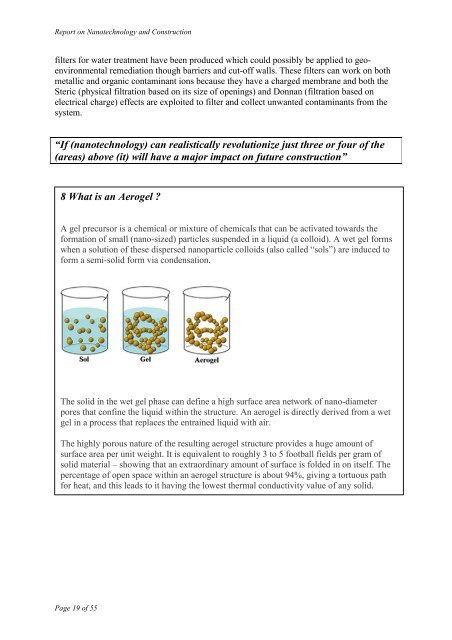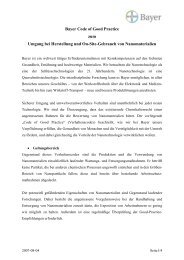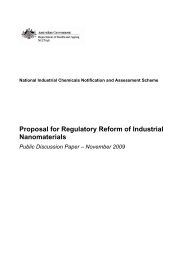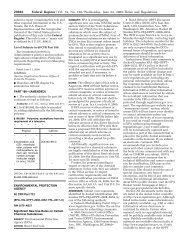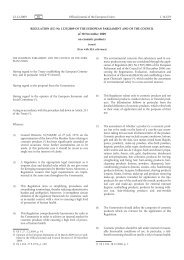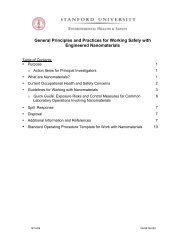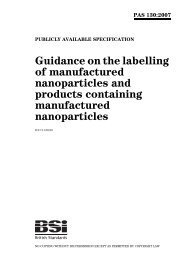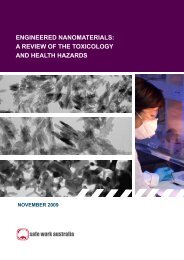Nanotechnology and Construction
Nanotechnology and Construction
Nanotechnology and Construction
You also want an ePaper? Increase the reach of your titles
YUMPU automatically turns print PDFs into web optimized ePapers that Google loves.
Report on <strong>Nanotechnology</strong> <strong>and</strong> <strong>Construction</strong><br />
filters for water treatment have been produced which could possibly be applied to geoenvironmental<br />
remediation though barriers <strong>and</strong> cut-off walls. These filters can work on both<br />
metallic <strong>and</strong> organic contaminant ions because they have a charged membrane <strong>and</strong> both the<br />
Steric (physical filtration based on its size of openings) <strong>and</strong> Donnan (filtration based on<br />
electrical charge) effects are exploited to filter <strong>and</strong> collect unwanted contaminants from the<br />
system.<br />
“If (nanotechnology) can realistically revolutionize just three or four of the<br />
(areas) above (it) will have a major impact on future construction”<br />
8 What is an Aerogel ?<br />
A gel precursor is a chemical or mixture of chemicals that can be activated towards the<br />
formation of small (nano-sized) particles suspended in a liquid (a colloid). A wet gel forms<br />
when a solution of these dispersed nanoparticle colloids (also called “sols”) are induced to<br />
form a semi-solid form via condensation.<br />
The solid in the wet gel phase can define a high surface area network of nano-diameter<br />
pores that confine the liquid within the structure. An aerogel is directly derived from a wet<br />
gel in a process that replaces the entrained liquid with air.<br />
The highly porous nature of the resulting aerogel structure provides a huge amount of<br />
surface area per unit weight. It is equivalent to roughly 3 to 5 football fields per gram of<br />
solid material – showing that an extraordinary amount of surface is folded in on itself. The<br />
percentage of open space within an aerogel structure is about 94%, giving a tortuous path<br />
for heat, <strong>and</strong> this leads to it having the lowest thermal conductivity value of any solid.<br />
Page 19 of 55


